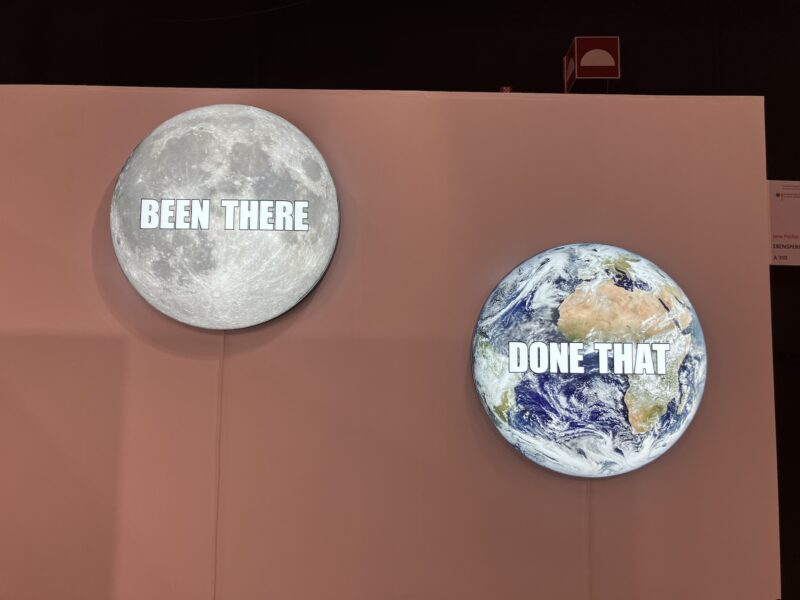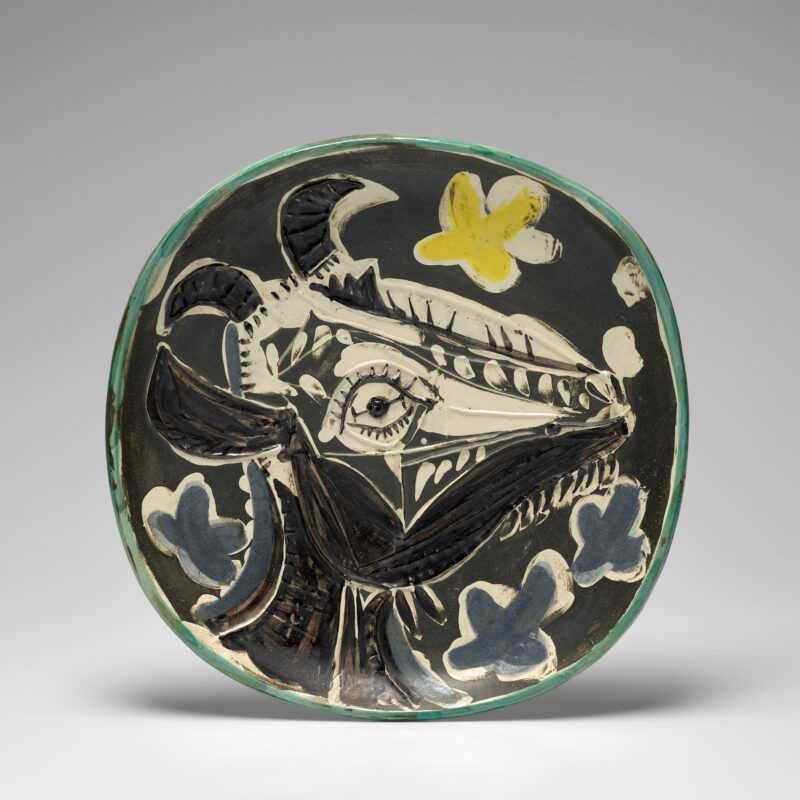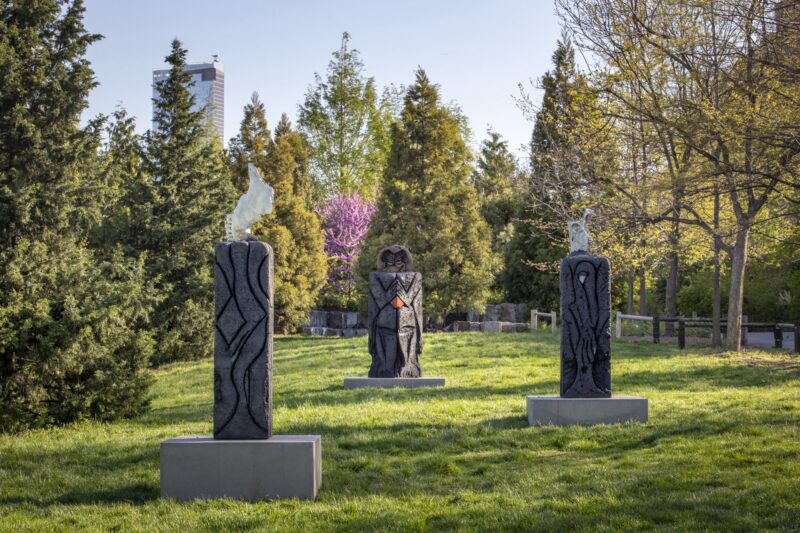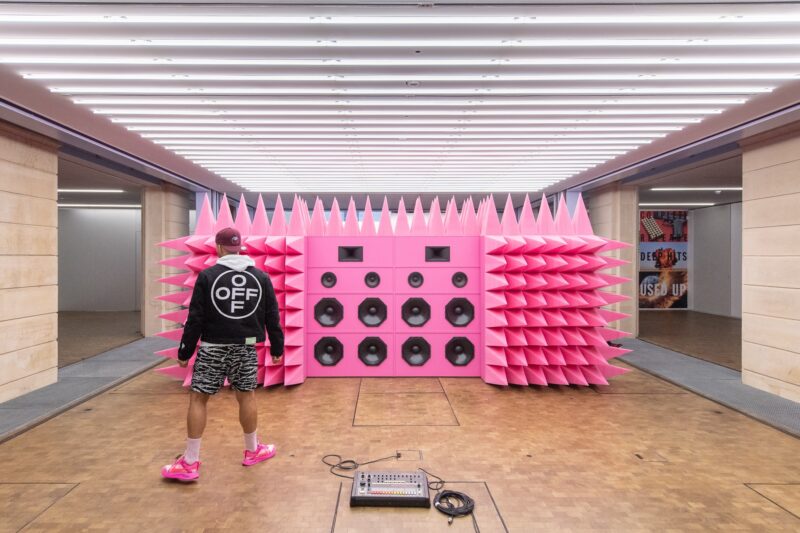Over the New Year Governor Andrew M. Cuomo announced the opening of the new Moynihan Train Hall, along with three unprecedented site-specific art installations by Stan Douglas, artist duo Elmgreen & Dragset, and Kehinde Wiley.
The artworks have been commissioned through a partnership between Empire State Development and Public Art Fund (the leading non-profit that commissions and presents art in public spaces).
“Nothing could be more fitting for a great metropolitan transit hub than three astonishing works of art that stop us in our tracks. Each one dazzles with its sheer beauty, epic scale, and technical mastery. Collectively, they also remind us that great art comes from great ideas. Each artist has thought deeply about the history, context, significance, and future of this newly transformed place, creating brilliantly innovative works of art that allow us to see ourselves – past, present, and future – in a truly civic space.”
said Nicholas Baume, Director & Chief Curator of Public Art Fund.
Wiley’s and Elmgreen & Dragset’s breathtaking ceiling installations define two primary entryways to the Train Hall—the Midblock Entrances at 31st and 33rd Streets—while Douglas’s captivating photo series appears in four 22-foot-long panels on the wall spanning The Ticketed Waiting Room adjacent to the main grand sky-lit boarding concourse. Woven into the fabric of the building, these works are destined to become emblems of the Train Hall and the city.
Pushing the boundaries of their practices and using new technologies, the artists pay tribute to and draw on the legacies of the McKim, Mead & White-designed Farley Building and its architectural sister, the original Pennsylvania Station. The Train Hall’s public art program sets a new standard for contemporary public art in a landmark civic space. Whether or not you’re catching a train, the public art program makes the Train Hall a destination in its own right.
The conversion of the 1914 James A. Farley Post Office in Midtown Manhattan into the 21st-century Train Hall represents one of the most ambitious upgrades to New York’s transit infrastructure in decades. Transforming the travel experience for hundreds of thousands of Long Island Rail Road and Amtrak passengers—and named after its longtime champion, the late Senator Daniel Patrick Moynihan—Moynihan Train Hall will once again welcome residents and visitors alike into an architectural marvel with a monumentality befitting New York.
All permanent installations will be on view when the new Train Hall opens January 1, 2021.
Kehinde Wiley (b. 1977 in Los Angeles, CA) Go, 2020
On view on the 33rd Street Midblock Entryway Ceiling

Photographer: Nicholas Knight. Image courtesy of the Artist, Sean Kelly, New York, Empire State Development and Public Art Fund, NY
Artist Kehinde Wiley’s site-specific installation covers the ceiling of the train hall’s 33rd Street Midblock Entrance with a backlit, hand painted, stained-glass triptych that recalls the grandeur of decorative Renaissance and Baroque painting. Offering a modern interpretation of Giovanni Battista Tiepolo’s 18th century ceiling frescoes, Wiley’s composition features young, Black New Yorkers depicted in poses borrowed from breakdance, the modern dance style which originated on the streets of New York during the 1960s and 70s among African American and Latino youth. In Wiley’s composition, the subjects inhabit the sky alongside clouds, pigeons, and a jet plane. Go looks to the contemporary urban setting of New York City to create a surrealist dreamscape that advances a narrative of buoyancy, possibility, and survival.
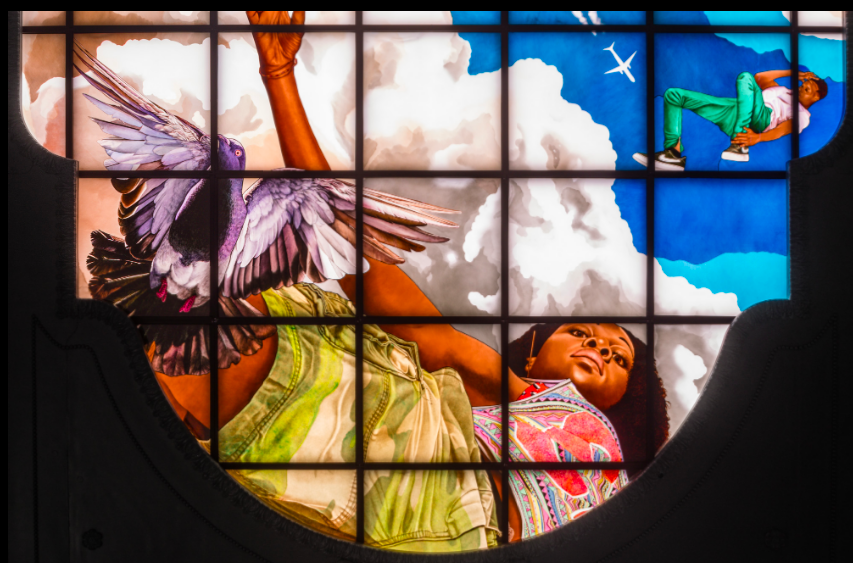
Photographer: Nicholas Knight. Image courtesy of the Artist, Sean Kelly, New York, Empire State Development and Public Art Fund, NY
Elmgreen & Dragset Michael Elmgreen (b. 1961 in Copenhagen, Denmark), Ingar Dragset (b. 1969 in Trondheim, Norway) The Hive, 2020 On view on the 31st Street Midblock Entryway Ceiling
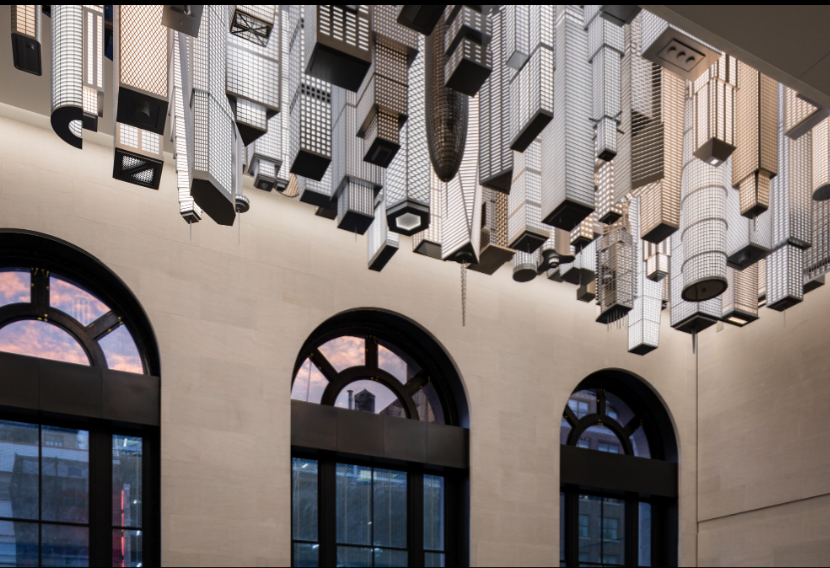
The artist duo Elmgreen & Dragset’s fantastical inverted cityscape is inspired by iconic buildings in New York City and from cities around the world, which the artists have woven into architectural designs of their own invention. Choosing to title the work The Hive, the artists suggest a link between natural and human-made structures, like the complex and evolving architecture of a hive. They’ve also described the ceiling-mounted buildings as being like luminous stalactites that pay tribute to the cities we live in today while reminding us of our cave-dweller origins. With technological precision, the imaginary city captures the multiplicity and synergy of the world’s metropolises.

Appearing simultaneously monumental and weightless, The Hive is composed of 91 buildings that weigh a total of more than 30,000 lbs. The 72,000 LEDs located within the up to nine-foot-tall model buildings illuminate the 31st Street entrance hall from day to night, reflecting New York’s ceaseless energy. As visitors pause on entering the train hall The Hive celebrates the new perspectives and interconnectedness that cities and travel provide.
Stan Douglas (b. 1960 in Vancouver, Canada) Penn Station’s Half Century, 2020: A series of nine photographic panels on view in the seating alcoves of The Ticketed Waiting Room adjacent to the main concourse
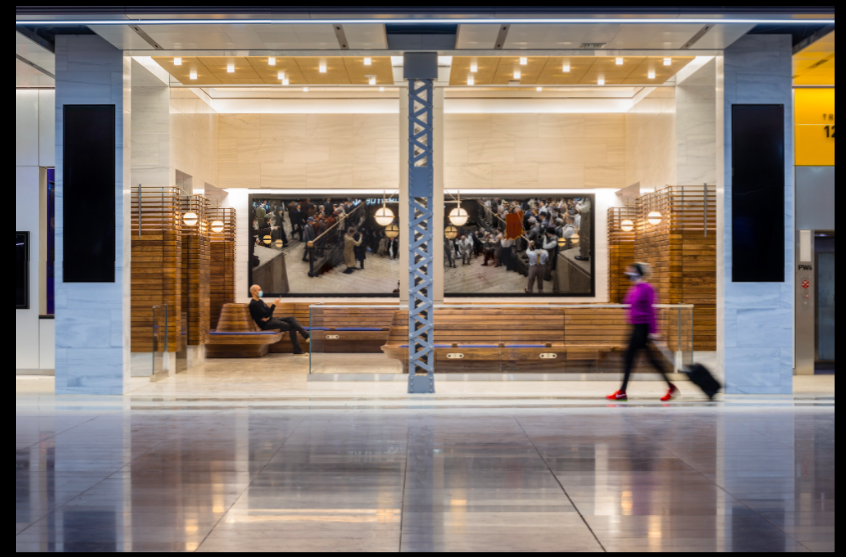
22 April 1924 and 7 August 1934, from Penn Station’s Half Century, 2020
Ceramic ink on glass. One of nine photographic panels from Penn Station’s Half Century
Commissioned by Empire State Development in partnership with Public Art Fund for Moynihan Train Hall ©Stan Douglas. Courtesy of the artist, Victoria Miro and David Zwirner.
Photo: Nicholas Knight, courtesy Empire State Development and Public Art Fund, NY
Artist Stan Douglas drew on archival research to reconstruct nine remarkable but forgotten moments from the history of the original Pennsylvania Station (1910-1963) that capture the serendipity and poignancy of daily life. He photographed live actors in period costume and seamlessly combined them with digitally recreated interiors of the demolished station. The resulting images pay tribute to McKim, Mead & White’s original station, and to the layers of human experience that bring our civic spaces to life.
The series of photographic panels are located within four seating alcoves in the Amtrak ticketed waiting area. These vivid evocations of the city’s forgotten history include:
The cinematic quality of each scene revives these historic moments in uncanny detail, revealing the architectural landmark as a grand theater for the millions of human dramas that animate civic spaces and imbue them with memory and meaning.
